International Journal of Pharmaceutical Sciences and Developmental Research
Dasatinib-Induced Colitis: Risk of misdiagnosis of inflammatory bowel disease. A case report and review of the literature
Graziana Arborea1*, Anna Maria Valentini1, Stefania Marangi2, Nicoletta Labarile LT1 and Maria Teresa Savino1
2Department of Gastroenterology, National Institute of Gastroenterology “S. de Bellis”, Research Hospital, Castellana Grotte, Bari, Italy
Cite this as
Arborea G, Valentini AM, Marangi S, Nicoletta Labarile LT, Savino MT (2023) Dasatinib-Induced Colitis: Risk of misdiagnosis of inflammatory bowel disease. A case report and review of the literature. Int J Pharm Sci Dev Res 9(1): 006-011. DOI: 10.17352/ijpsdr.000046Copyright License
© 2023 Arborea G, et al. This is an open-access article distributed under the terms of the Creative Commons Attribution License, which permits unrestricted use, distribution, and reproduction in any medium, provided the original author and source are credited.Dasatinib is a potent tyrosine kinase inhibitor, in disease states associated with BCR/ABL 1, approved in 2006 for chronic myeloid leukemia treatment. This agent has been shown to exhibit broad off-target kinase inhibition and immunomodulating properties. These effects may be responsible for common adverse reactions (> 15%) which include immunosuppression, cytopenias, pleural effusion and other fluid retention, diarrhea, and other gastrointestinal side effects.
Although gastrointestinal bleeding is a well-documented side effect, the presentation of colitis is an uncommon occurrence.
In most cases, it is hemorrhagic colitis, nonspecific colitis, or CMV-related colitis.
We report a 34-year-old male patient affected by CML in treatment with Dasatinib for approximately 1 year, who reported chronic diarrhea which progressed to suspected Dasatinib-induced colitis whose clinical, endoscopic, and histological findings overlapped those of Inflammatory Bowel Disease.
Introduction
Chronic Myeloid Leukemia (CML) is one of the most common leukemias occurring in the adult population. The course of CML presents three possible phases: the chronic phase, the acceleration phase, and the blast phase.
Pathophysiology of CML revolves around Philadelphia chromosome that constitutively activates tyrosine kinase through BCR-ABL1 oncoprotein. In the era of Tyrosine Kinase Inhibitors (TKIs), CML patients now have a similar life expectancy to people without CML, and it is now very rare for these patients to progress to the blast phase. Only a small proportion of CML patients have resistance to TKI, caused by BCR-ABL1 point mutations. CML patients with TKI resistance should be treated with second or third-generation TKI, depending on the BCR-ABL1 mutation [1].
Dasatinib (SPRYCEL, Bristol-Myers Squibb, NewYork, NY, USA)is a second-generation Tyrosine Kinase Inhibitor (TKI), which is approved as a first-line treatment for Chronic Myelogenous Leukemia (CML), obtaining faster and deeper levels of response compared with Imatinib [2], leading to high levels of progression-free and overall survival.
Dasatinib is also well tolerated and offers meaningful advantages for CML-CP patients [3].
The randomized, phase III DASISION trial demonstrated improved efficacy with dasatinib compared with imatinib in treatment-naïve CML-CP patients.
At 5 years, dasatinib 100 mg once daily has demonstrated superior outcomes compared to imatinib 400 mg once daily as initial therapy for CML. In addition, the 5-year analysis from the phase III Dasatinib Versus ImatinibStudy in Treatment-Naïve Chronic Myeloid Leukemia Patients (DASISION) trial, evaluated long-term efficacy and safety outcomes of patients with Chronic Myeloid Leukemia (CML) in Chronic Phase (CP) treated with dasatinib or imatinib.
Results from the final 5-year dasision study demonstrated that patients taking dasatinib had more rapid and profound MRs than those taking imatinib.
There are no new safety signals observed with dasatinib in long-term follow-up.
These results suggest that first-line dasatinib could still be considered a standard of first-line therapy for patients with newly diagnosed CML [4].
So, the phase III DASISION trial confirmed the safety and efficacy of Dasatinib as first-line therapy in CML but highlighted the possibility of gastrointestinal tract side effects: occult gastrointestinal bleeding occurs in 2% -12% of cases [5].
A survey looking at bleeding diathesis in CML patients receiving Dasatinib confirmed that it is in the gastrointestinal tract that 81% of all bleeding episodes occur [6]. Gastrointestinal bleeding is consistent with the oral route of Dasatinib and its subsequent elimination in the faeces [7]: exposure of the bowel to Dasatinib during its elimination may make the lower gastrointestinal tract particularly vulnerable, and this may explain the development of colitis in these patients [6].
Dasatinib treatment can lead to hemorrhagic colitis, which typically resolves after discontinuation of the drug [8].
A recent prospective study reports Dasatinib-induced haemorrhagic colitis in one-third of CML patients treated with Dasatinib [9,10].
The histologic pattern of active colitis, with acute cryptitis and crypt abscesses, is described in a few reported cases [11].
We present a case of Dasatinib-Induced Colitis in which the histological findings overlapped those of Inflammatory Bowel Disease (IBD).
Case report
A young 34-year-old male was diagnosed with Philadelphia chromosome positive-CML, and treated with Dasatinib at a daily dosage of 100 mg. Before the drug administration, he had no gastrointestinal symptoms such as vomiting, diarrhea, weight loss, or bleeding from any site. After approximately 1 year, he developed chronic diarrhea lasting for almost 3-4 months, so a gastroenterology appointment was scheduled.
Following this consultation, the medical team performed a bacteriological and parasitological stool examination that resulted in negative.
Subsequently, they performed a total colonoscopy due to suspected neutropenic or drug-induced colitis. Multiple shallow areas of mucosal erosion measuring 6-8 mm in the descending and sigmoid colon emerged in the investigation. Therefore, the team carried out biopsies of the ileum, colon – right and left- and rectum.
The histological examination revealed a mild to moderate active inflammation with mild cryptitis (Figure 1). The inflammatory infiltrate was composed of a mixture of lymphocytes, plasma cells, neutrophils, and increased numbers of eosinophils (> 20/HPF) (Figure 2).
Very occasional branched crypts (Figure 3), borderline basal plasmacytosis and focal surface microabscesses (Figure 4) and erosion (Figure 5) were also evident. No crypt abscesses were seen.
Immunohistochemical staining excluded CMV infection.
The observation of basal plasmocytosis and crypt architectural distortion raised the hypothesis of inflammatory bowel disease but on the basis of the clinical information, we were able to diagnose DIC.
Although patients with drug-induced colitis typically need to suspend the therapy, Dasatinib was continued without interruption or dose adjustment in our patient due to the absence of important gastrointestinal symptoms such as bloody stool or abdominal pain.
Our study highlights the possibility that dasatinib-induced colitis may not only be of the hemorrhagic type or non-specific colitis, as the literature reports in the last decade but that it may mimic a chronic inflammatory bowel disease, thus opening scenarios diagnostically complex.
The limit of our work is certainly represented by the small number of cases. Recently, however, the working group of Drs Grillo and Dr Mastracci of the University of Genoa has published a short report, in which they describe a novel Crohn's-like histopathologic pattern of Dasatinib-induced colitis [12].
We look forward to a further evaluation of the incidence of these specific inflammatory manifestations affecting the intestinal mucosa during treatment with Dasatinib in the future.
Systematic review
We searched for all case reports, series, and literature reviews, published in the past decade, that reported gastrointestinal side effects in patients affected by chronic myeloid leukemia in treatment with Dasatinib, by using “Dasatinib-induced colitis” as keywords.
We found 28 cases of DIC, confirmed on pathology (Table 1).
References may be found on Pubmed
DIC occurred in the 33-69 years age range and there appeared to be no gender differences in morbidity. In the DIC cases reviewed, colitis symptoms onset occurred between one month and three years from the beginning of therapy, except for a single case in which colitis appeared after 6 years [13]. Most episodes occurred after 3-month drug exposure. These data suggest that this side effect usually follows a few weeks to some months after the initiation of therapy, but can also occur several years after treatment.
The symptomatology and clinical presentation of DIC are extremely variable, as shown by our review. Among the analyzed cases, six cases featured asymptomatic colitis, diagnosed through a histological examination conducted following FOB positivity [13,14], ten patients had chronic diarrhea -of which four with blood diarrhea [6,15-17], and two with watery diarrhea [18,19], two patients had the fever [18,20] and four patients had persistent abdominal pain [11,18,21,22], rectal bleeding was the chief complaint in four patients [22-25], hematochezia in seven patients [18,20,21,26].
Sigmoidoscopy/colonoscopy examination findings showed inflammatory changes in all cases, with shallow erosion and even haemorrhagic ulcers. Diffuse papular erythematous areas and diminutive nodules throughout the colon were identified in two cases [5,15].
The histopathological examination allowed haemorrhagic colitis to be identified in twelve patients and ulcerative colitis in only one [21]. Histology revealed four cases of active inflammation with cryptitis [5 11,13,14] and four cases with focal minimal active colitis [19,22,24], only one nonspecific colitis [16] and, in one case, mucosa with no significant pathological changes [6]. Five patients, during Dasatinib treatment, were diagnosed with CMV colitis, mimicking Dasatinib-induced haemorrhagic colitis [18]. CMV colitis is defined by the detection of the virus in a biopsy tissue, through microscopic finding and immunohistochemical staining. These cases suggest the possibility of CMV reactivation in patients on Dasatinib, so this reactivation should be considered in unexplained inflammatory responses during Dasatinib treatment [18]. Therefore DIC may have an association with CMV colitis, although the exact role of CMV in cases of Dasatinib-associated colitis remains unclear.
Discussion
The rearrangement of two particular chromosomes 9 and 22 in the BRC-ABL-1 fusion gene, known as the Philadelphia chromosome, is typically responsible for CML. This oncogene produces a constitutively activated enzyme (tyrosine kinase) responsible for the abnormally increased blood cell production in CML [5].
Dasatinib is a potent inhibitor of this kinase, as well as acting against Src kinases, c-kit, and PDGFR-beta (platelet-derived growth factor receptor-beta) [5,15].
Dasatinib has been approved for first-line therapy for CML, as well as second-line therapy when the patient exhibits intolerance or resistance, mainly to Imatinib therapy [15,27,28].
The randomized phase III DASISION trial demonstrated greater efficacy of Dasatinib compared to Imatinib in the treatment of CML [29]; in addition, Dasatinib is better tolerated and demonstrated a faster response within 3 months.
Although more effective and generally well tolerated, Dasatinib has a 22% incidence of local side effects [13]. Those are for the most part moderate and manageable, such as superficial edema, muscle cramps, skin rashes, nausea, and cytopenia [30] and include gastrointestinal disturbances, such as diarrhea and vomiting. In addition, systemic symptoms, such as anorexia and edema [15], are reported. In a high percentage of patients, gastrointestinal bleeding with faecal occult blood (FOB) is observed, unveiling a series of patients with active colitis [13].
Gastrointestinal bleeding has been reported in 2% - 9% of cases but although well documented in literature during Dasatinib therapy, Dasatinib-induced colitis (DIC) is a rare adverse event. In most cases DIC presents in haemorrhagic form, featuring bloody diarrhea which may appear from a few weeks to months after the start of therapy but also after a few years. This condition may require the suspension or a dosage reduction of the therapy [16]. DIC (except for cases of colitis-associated CMV) generally resolves within a few days after drug discontinuation but would recur within a short period of time, if the drug were reintroduced.
The mechanism underlying colitis is still unknown; theories advanced include an immune reaction, thrombocytopenia, platelet dysfunction, and impaired immune tolerance to the intestinal microbiota [11].
In particular, it is likely that this drug interferes with the activation and aggregation of platelets through the inhibition of the Src family, as well as preventing megakaryocytes from forming the platelet plug, thus preventing the activation of haemostasis [5]. This could act by reducing the number of T and NK lymphomonocytes [31] in the intestine, limiting the natural tolerance in the commensal intestinal bacterial flora and so causing DIC [21].
Our biopsies reveal changes indicative of chronic injury, in association with focal surface erosion and acute mild cryptitis. These histologic features cannot be differentiated pathologically from IBD and they appear as potential mimics of IBD. In our case, we were able to diagnose Dasatinib-induced colitis thanks to the clinical information. Without a pharmacological history, we could have concluded the onset of IBD.
Recognizing this Dasatinib-induced colitis has positive implications, such as avoiding overtreatment, including the use of specific IBD-drug therapy.
Conclusion
We present this interesting case of Dasatinib-induced Colitis in order to shed light on one hyperinflammation condition of the large bowl, drug-induced, which share clinical, endoscopic, and histologic features with IBD. The diagnosis of Ulcerative Colitis or Crohn's disease is straightforward, especially when patients have a typical presentation and characteristic histopathological features. Knowledge of the full clinical history is very important, particularly past and recent medical history and drug history. Accurate diagnosis of IBD and exclusion of IBD mimics are crucial for patient management. Serious errors in treatment could be the result. Close attention to the clinical picture, information on therapeutic treatment, and a careful approach to colo-rectal biopsy assessment by the pathologist should help reduce the chance of misdiagnosis of IBD.
Statement of ethics
This study was approved by both the local Scientific Committee and the Institutional Ethics Committee of the Oncologic Institute Research Hospital of Bari –Italy and was performed following the Declaration of Helsinki. The patient was compliant and willing to participate in the study. Written informed consent was obtained from the patient for laboratory investigations and clinical data recording.
- Rinaldi I., Winston K. Chronic Myeloid Leukemia, from Pathophysiology to Treatment-Free Remission: A Narrative Literature Review. J Blood Med. 2023 Apr 6;14:261-277
- Hehlmann R, Lauseker M, Saußele S, Pfirrmann M, Krause S, Kolb HJ, Neubauer A, Hossfeld DK, Nerl C, Gratwohl A, Baerlocher GM, Heim D, Brümmendorf TH, Fabarius A, Haferlach C, Schlegelberger B, Müller MC, Jeromin S, Proetel U, Kohlbrenner K, Voskanyan A, Rinaldetti S, Seifarth W, Spieß B, Balleisen L, Goebeler MC, Hänel M, Ho A, Dengler J, Falge C, Kanz L, Kremers S, Burchert A, Kneba M, Stegelmann F, Köhne CA, Lindemann HW, Waller CF, Pfreundschuh M, Spiekermann K, Berdel WE, Müller L, Edinger M, Mayer J, Beelen DW, Bentz M, Link H, Hertenstein B, Fuchs R, Wernli M, Schlegel F, Schlag R, de Wit M, Trümper L, Hebart H, Hahn M, Thomalla J, Scheid C, Schafhausen P, Verbeek W, Eckart MJ, Gassmann W, Pezzutto A, Schenk M, Brossart P, Geer T, Bildat S, Schäfer E, Hochhaus A, Hasford J. Assessment of imatinib as first-line treatment of chronic myeloid leukemia: 10-year survival results of the randomized CML study IV and impact of non-CML determinants. Leukemia. 2017 Nov;31(11):2398-2406. doi: 10.1038/leu.2017.253. Epub 2017 Aug 14. PMID: 28804124; PMCID: PMC5668495.
- Cortes JE, Saglio G, Baccarani M. Final Study Results of the Phase 3 Dasatinib Versus Imatinib in Newly Diagnosed Chronic Myeloid Leukemia in Chronic Phase (CML-CP) Trial (DASISION, CA180-056). Blood. 2014; 124 (21): 152.
- Cortes JE, Saglio G, Kantarjian HM, Baccarani M, Mayer J, Boqué C, Shah NP, Chuah C, Casanova L, Bradley-Garelik B, Manos G, Hochhaus A. Final 5-Year Study Results of DASISION: The Dasatinib Versus Imatinib Study in Treatment-Naïve Chronic Myeloid Leukemia Patients Trial. J Clin Oncol. 2016 Jul 10;34(20):2333-40. doi: 10.1200/JCO.2015.64.8899. Epub 2016 May 23. PMID: 27217448; PMCID: PMC5118045.
- Tamilarasan AG, Katelaris P, Gasiorowski R. Dasatinib-induced colitis: a case report. Pathology. 2019; 51:757-759.
- Maat Z, Mushtaq K, Yassin MA. Dasatinib-Induced Colitis with Rectal Sparing in a Patient with Chronic Myeloid Leukemia (Chronic Phase) on Dasatinib as an Upfront Therapy: Case Report. Case Rep Oncol. 2021 Oct 18;14(3):1441-1446. doi: 10.1159/000516794. PMID: 34899234; PMCID: PMC8613618.
- Christopher LJ, Cui D, Wu C, Luo R, Manning JA, Bonacorsi SJ, Lago M, Allentoff A, Lee FY, McCann B, Galbraith S, Reitberg DP, He K, Barros A Jr, Blackwood-Chirchir A, Humphreys WG, Iyer RA. Metabolism and disposition of dasatinib after oral administration to humans. Drug Metab Dispos. 2008 Jul;36(7):1357-64. doi: 10.1124/dmd.107.018267. Epub 2008 Apr 17. PMID: 18420784.
- Kmira Z, Nesrine BS, Houneida Z, Wafa BF, Aida S, Yosra BY, Monia Z, Sriha B, Abderrahim K. Severe hemorrhagic colitis in a patient with chronic myeloid leukemia in the blastic phase after dasatinib use. World J Gastrointest Pathophysiol. 2013 Aug 15;4(3):59-62. doi: 10.4291/wjgp.v4.i3.59. PMID: 23946889; PMCID: PMC3740261.
- Nishiwaki S, Maeda M, Yamada M, Okuno S, Harada Y, Suzuki K, Kurahashi S, Urano F, Okamura S, Sugiura I. Clinical efficacy of fecal occult blood test and colonoscopy for dasatinib-induced hemorrhagic colitis in CML patients. Blood. 2017 Jan 5;129(1):126-128. doi: 10.1182/blood-2016-08-734947. Epub 2016 Nov 18. PMID: 27864292.
- Ono Y, Mori T, Kato J, Yamane A, Yajima T, Iwao Y, Hibi T, Okamoto S. Hemorrhagic colonic ulcers caused by dasatinib for chronic myelogenous leukemia. Int J Hematol. 2010 Oct;92(3):556-8. doi: 10.1007/s12185-010-0677-7. Epub 2010 Sep 8. PMID: 20824400.
- Contino K, Lautenslager T, Enriquez M. Dasatinib-Induced Colitis: A Potential Mimic of Inflammatory Bowel Disease. The American Journal of Gastroenterology. 2020; 115: S883.
- Grillo F, Carlin L, Remo A, Fassan M, Mescoli C, Campora M, Caserta L, Mazza F, Mastracci L. Dasatinib-induced Crohn's-like colitis. J Clin Pathol. 2023 Mar;76(3):202-205. doi: 10.1136/jclinpath-2022-208340. Epub 2022 Jun 14. PMID: 35701140.
- Beltrán JV, Alarcón BA, Fernández CO. Colitis inducida por dasatinib: descubriendo los efectos secundarios de la inmunoterapia. Revista Española De Enfermeda des Digestivas. 2020; 112: 663-664.
- Oshima N, Mishima Y, Shibagaki K, Kawashima K, Ishimura N, Ikejiri F, Onishi C, Okada T, Inoue M, Moriyama I, Suzumiya J, Kinoshita Y, Ishihara S. Differential gene expression analysis of dasatinib-induced colitis in a patient with chronic myeloid leukemia followed for 3 years: a case report. BMC Gastroenterol. 2021 Jan 6;21(1):19. doi: 10.1186/s12876-020-01584-6. PMID: 33407162; PMCID: PMC7789270.
- Chisti MM, Khachani A, Brahmanday GR, Klamerus J. Dasatinib-induced haemorrhagic colitis in chronic myeloid leukaemia (CML) in blast crisis. BMJ Case Rep. 2013 Dec 12;2013:bcr2013200610. doi: 10.1136/bcr-2013-200610. PMID: 24334470; PMCID: PMC3863026.
- Perdigoto DN, Lopes S, Portela F, Cipriano MA, Tomé L. Dasatinib-Induced Colitis in a Patient with Chronic Myelogenous Leukemia. GE Port J Gastroenterol. 2018 Jun;25(4):198-200. doi: 10.1159/000481538. Epub 2017 Oct 28. PMID: 29998167; PMCID: PMC6029224.
- Yassin MA, Nashwan AJ, Soliman AT, Yousif A, Moustafa A, AlBattah A, Mohamed SF, Mudawi DS, Elkourashy S, Asaari DR, Gutierrez HL, Almusharaf M, Hussein RM, Moustafa AH, Derhoubi HE, Boukhris S, Kohla S, AlDewik N. Cytomegalovirus-induced Hemorrhagic Colitis in a Patient with Chronic Myeloid Leukemia (Chronic Phase) on Dasatinib as an Upfront Therapy. Clin Med Insights Case Rep. 2015 Aug 26;8:77-81. doi: 10.4137/CCRep.S25327. PMID: 26379451; PMCID: PMC4554353.
- Choi JK, Cho SY, Choi SM, Kim GH, Lee SE, Lee S, Kim DW, Lee DG. Cytomegalovirus Colitis during Dasatinib Treatment for Patients with Hematologic Malignancy: Case Series and Literature Review. Infect Chemother. 2018 Jun;50(2):153-159. doi: 10.3947/ic.2018.50.2.153. PMID: 29968984; PMCID: PMC6031599.
- Riaz LM, Galal KM, Radwa M. Dasatinib-Induced Colitis in a Patient with Chronic Myeloid Leukemia (Chronic Phase). IJCR. 2018; 3:43.
- Ahn H, Kwon JE, Sohn SW, Kwon JH, Kim JS, Yoon SS, Kang HR, Hong KS. A Case of Dasatinib-Induced Hemorrhagic Colitis Diagnosed by the Lymphocyte Transformation Test in a Chronic Myeloid Leukemia Patient. Indian J Hematol Blood Transfus. 2016 Jun;32(Suppl 1):96-99. doi: 10.1007/s12288-015-0528-z. Epub 2015 Mar 18. PMID: 27408366; PMCID: PMC4925498.
- Del Sordo R, Lupinacci G, Tanzi G, Bassotti G, Villanacci V. Imatinib and Dasatinib-induced Ulcerative Colitis: Case Report. Inflamm Bowel Dis. 2022 Jan 5;28(1):e1-e2. doi: 10.1093/ibd/izab196. PMID: 34374765.
- Aldoss I, Gaal K, Al Malki MM, Ali H, Nakamura R, Forman SJ, Pullarkat V. Dasatinib-Induced Colitis after Allogeneic Stem Cell Transplantation for Philadelphia Chromosome-Positive Acute Lymphoblastic Leukemia. Biol Blood Marrow Transplant. 2016 Oct;22(10):1900-1903. doi: 10.1016/j.bbmt.2016.06.022. Epub 2016 Jun 23. PMID: 27346662.
- Patodi N, Sagar N, Rudzki Z, Langman G, Sharma N. Haemorrhagic colitis caused by dasatinib. Case Rep Hematol. 2012;2012:417106. doi: 10.1155/2012/417106. Epub 2012 Dec 22. PMID: 23316400; PMCID: PMC3539334.
- Shanshal M, Shakespeare A, Thirumala S, Fenton B, Quick DP. Dasatinib-Induced T-Cell-Mediated Colitis: A Case Report and Review of the Literature. Acta Haematol. 2016;136(4):219-228. doi: 10.1159/000448983. Epub 2016 Sep 23. PMID: 27656875.
- Nakaya A, Azuma Y, Fujita S, Satake A, Nakanishi T, Tsubokura Y, Konishi A, Hotta M, Yoshimura H, Ishii K, Ito T, Nomura S. Dasatinib-induced hemorrhagic colitis complicated with cytomegalovirus infection. Hematol Rep. 2017 Dec 22;9(4):7415. doi: 10.4081/hr.2017.7415. PMID: 29333227; PMCID: PMC5757412.
- Yim E, Choi YG, Nam YJ, Lee J, Kim JA. Dasatinib induces severe hemorrhagic colitis in a patient with accelerated phase of chronic myelogenous leukemia. Korean J Intern Med. 2018 Mar;33(2):446-448. doi: 10.3904/kjim.2015.325. Epub 2016 Mar 10. PMID: 26961484; PMCID: PMC5840586.
- Steinberg M. Dasatinib: a tyrosine kinase inhibitor for the treatment of chronic myelogenous leukemia and philadelphia chromosome-positive acute lymphoblastic leukemia. Clin Ther. 2007 Nov;29(11):2289-308. doi: 10.1016/j.clinthera.2007.11.005. PMID: 18158072.
- Brave M, Goodman V, Kaminskas E, Farrell A, Timmer W, Pope S, Harapanhalli R, Saber H, Morse D, Bullock J, Men A, Noory C, Ramchandani R, Kenna L, Booth B, Gobburu J, Jiang X, Sridhara R, Justice R, Pazdur R. Sprycel for chronic myeloid leukemia and Philadelphia chromosome-positive acute lymphoblastic leukemia resistant to or intolerant of imatinib mesylate. Clin Cancer Res. 2008 Jan 15;14(2):352-9. doi: 10.1158/1078-0432.CCR-07-4175. PMID: 18223208.
- Kantarjian HM, Shah NP, Cortes JE, Baccarani M, Agarwal MB, Undurraga MS, Wang J, Ipiña JJ, Kim DW, Ogura M, Pavlovsky C, Junghanss C, Milone JH, Nicolini FE, Robak T, Van Droogenbroeck J, Vellenga E, Bradley-Garelik MB, Zhu C, Hochhaus A. Dasatinib or imatinib in newly diagnosed chronic-phase chronic myeloid leukemia: 2-year follow-up from a randomized phase 3 trial (DASISION). Blood. 2012 Feb 2;119(5):1123-9. doi: 10.1182/blood-2011-08-376087. Epub 2011 Dec 9. PMID: 22160483; PMCID: PMC4916556.
- Quintás-Cardama A, Kantarjian H, Ravandi F, O'Brien S, Thomas D, Vidal-Senmache G, Wierda W, Kornblau S, Cortes J. Bleeding diathesis in patients with chronic myelogenous leukemia receiving dasatinib therapy. Cancer. 2009 Jun 1;115(11):2482-90. doi: 10.1002/cncr.24257. PMID: 19280591; PMCID: PMC4180711.
- Blake SJ, Bruce Lyons A, Fraser CK, Hayball JD, Hughes TP. Dasatinib suppresses in vitro natural killer cell cytotoxicity. Blood. 2008 Apr 15;111(8):4415-6. doi: 10.1182/blood-2008-02-138701. PMID: 18398058.
Article Alerts
Subscribe to our articles alerts and stay tuned.
 This work is licensed under a Creative Commons Attribution 4.0 International License.
This work is licensed under a Creative Commons Attribution 4.0 International License.
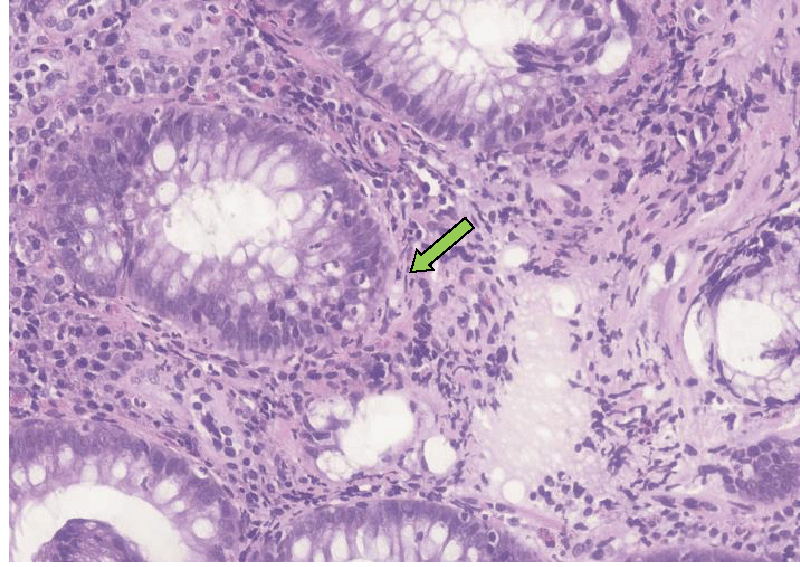
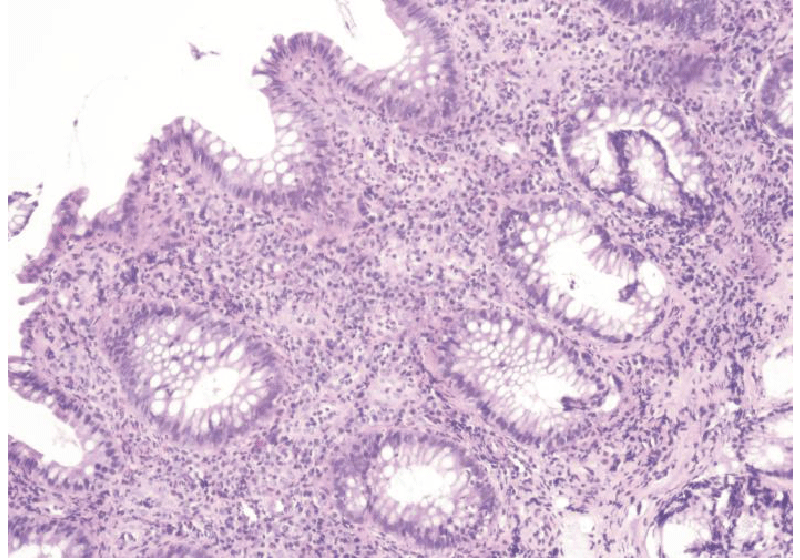
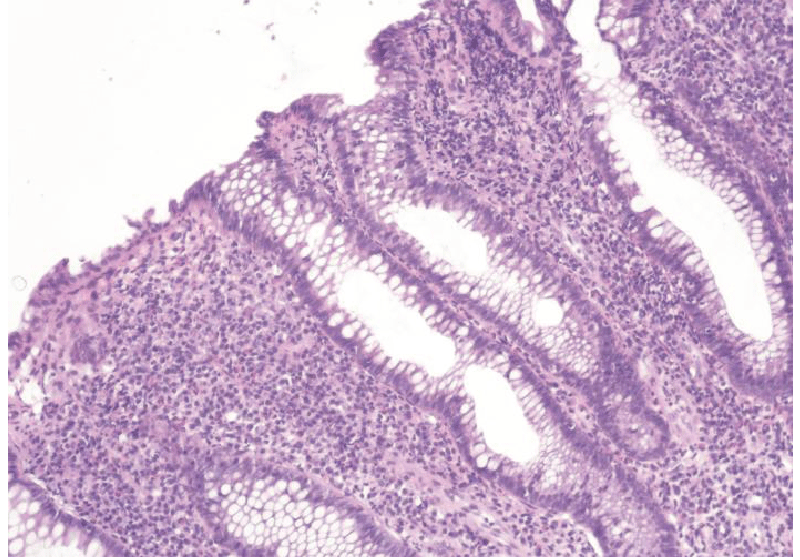
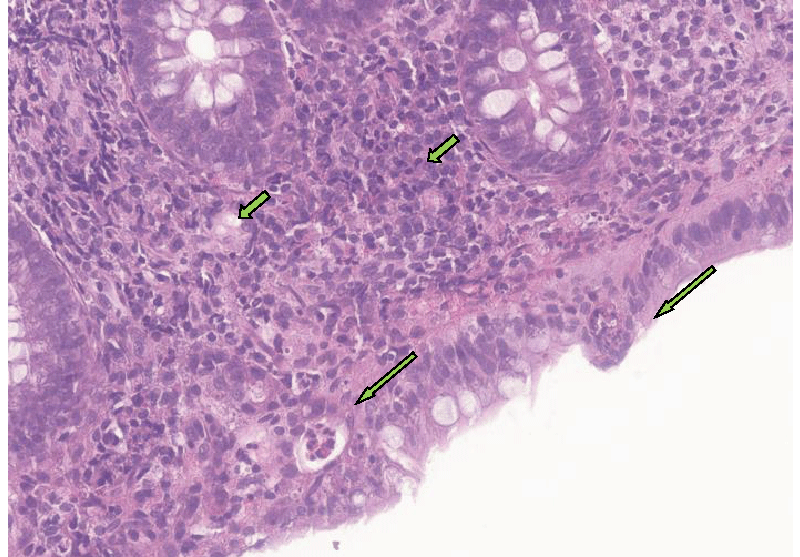
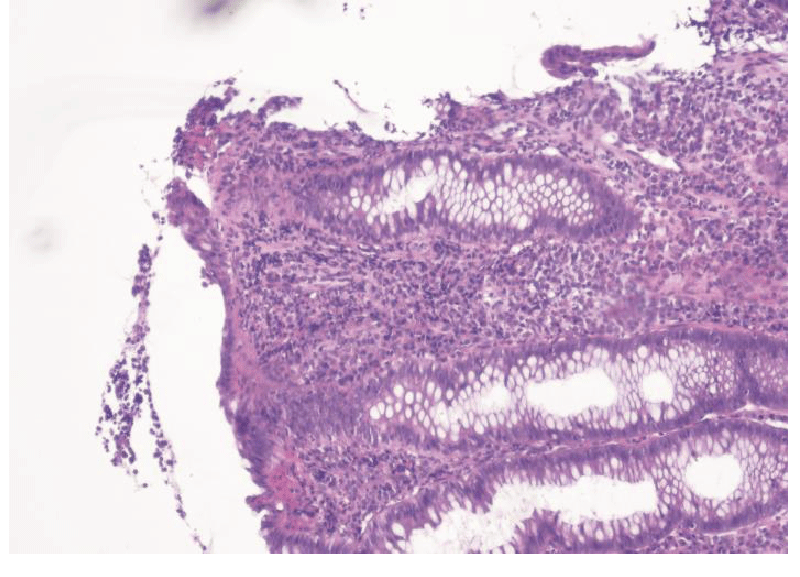


 Save to Mendeley
Save to Mendeley
